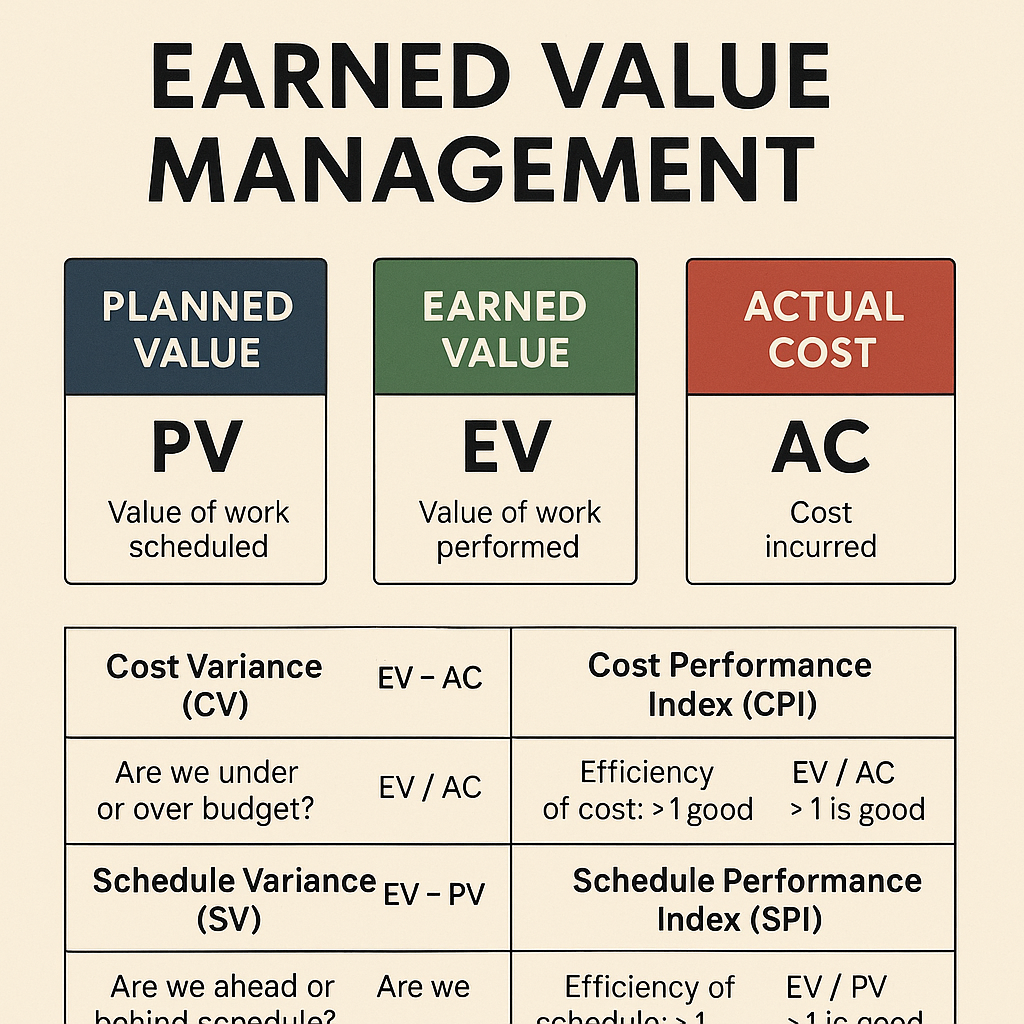
EVM, or Earned Value Management, integrates scope, time, and cost to evaluate project performance. It empowers project managers by addressing crucial questions like staying on schedule, managing budget constraints, and forecasting the project’s final cost.
🧩 Delving into EVM Components:
– Planned Value (PV): Represents scheduled work value to be accomplished by a specific date (BCWS).
– Earned Value (EV): Signifies actual work value completed by a given date (BCWP).
– Actual Cost (AC): Reflects real expenses incurred for work done by the specified date (ACWP).
📊 Key Performance Indicators (KPIs) in EVM:
– Cost Variance (CV): Evaluates budget variance by comparing EV to AC.
– Schedule Variance (SV): Determines schedule variance by contrasting EV with PV.
– Cost Performance Index (CPI): Measures cost efficiency; a value above 1 indicates positive performance.
– Schedule Performance Index (SPI): Assesses schedule efficiency; values above 1 reflect favorable progress.
– Estimate at Completion (EAC): Predicts total project cost using BAC divided by CPI.
– Variance at Completion (VAC): Estimates budget variance at project conclusion by subtracting EAC from BAC.
✅ Unlocking the Benefits of EVM:
– Provides an objective performance metric.
– Offers early detection of project issues.
– Facilitates informed forecasting and decision-making.
– Enhances stakeholder confidence in project outcomes.
